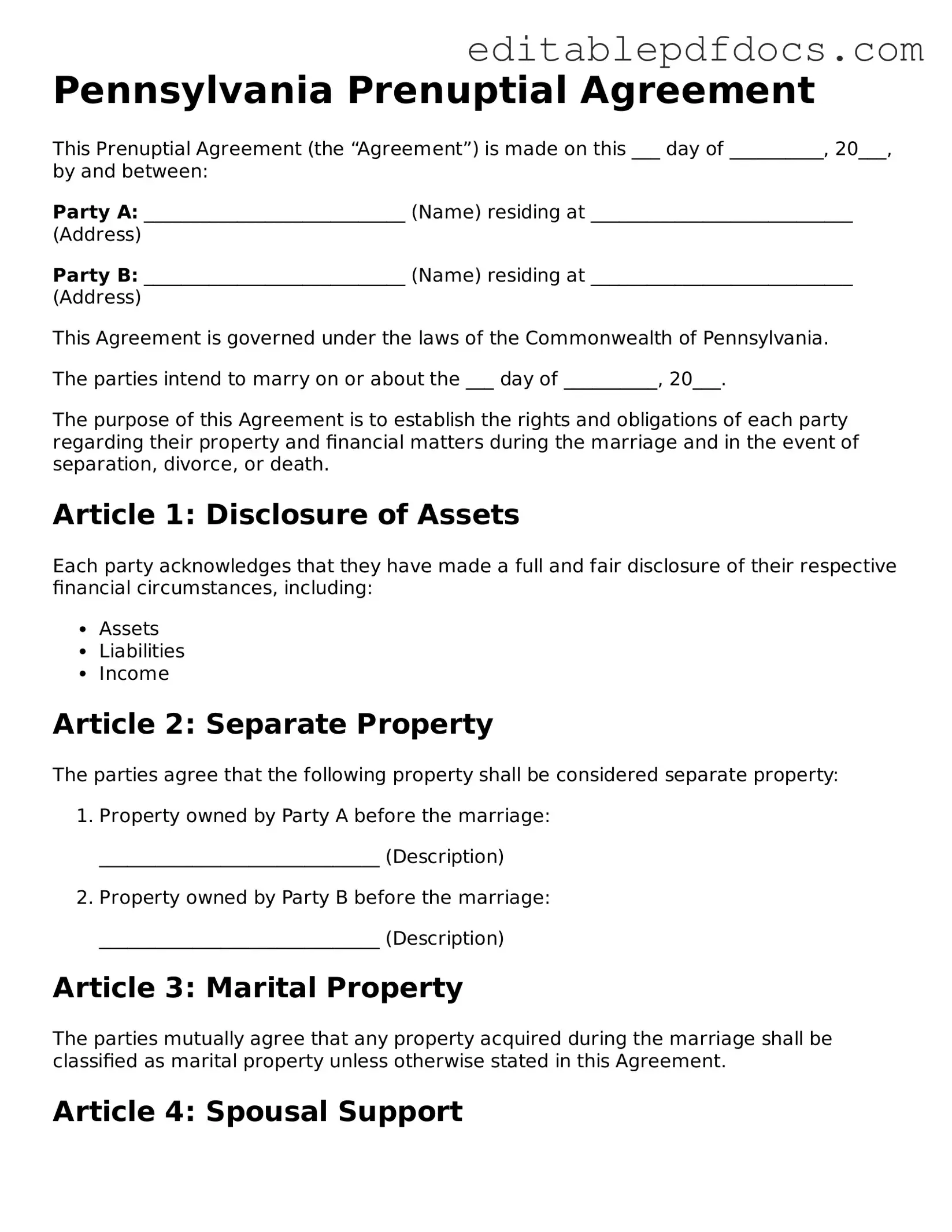Filling out the Pennsylvania Prenuptial Agreement form can be a straightforward process, but many people make common mistakes that can lead to complications later. One frequent error is not being clear about what assets are included. It’s essential to list all property and assets accurately. If something is omitted, it might not be protected under the agreement.
Another mistake is failing to update the agreement after significant life changes. If you acquire new assets or experience changes in your financial situation, it’s crucial to revisit the prenup. A stale agreement might not reflect your current circumstances, which can lead to disputes.
People often overlook the importance of full financial disclosure. Each party should provide a complete picture of their finances. Hiding assets or not being transparent can lead to the agreement being challenged in court.
Some individuals rush through the process without seeking legal advice. While it may seem unnecessary, consulting with a lawyer can help ensure that the agreement is fair and legally sound. A professional can also help clarify any confusing sections.
Not considering future changes is another common mistake. Life is unpredictable, and circumstances can shift. It’s wise to include provisions that address potential future events, like children or career changes, to avoid conflicts down the road.
Additionally, people sometimes fail to sign the agreement in front of a witness or notary. This step is crucial for the agreement's validity. Without proper signatures, the prenup may not hold up in court.
Another mistake is using vague language. Clear and specific terms help prevent misunderstandings. If the language is too broad or ambiguous, it can lead to different interpretations, which can create issues later on.
Some individuals forget to discuss the prenup with their partner before filling it out. Open communication is key to a healthy relationship. Discussing the terms and intentions behind the agreement can foster understanding and reduce tension.
Lastly, people sometimes assume that a prenup is only for the wealthy. This misconception can lead to missed opportunities for protection. Regardless of your financial situation, having a prenup can provide peace of mind and clarity for both parties.
